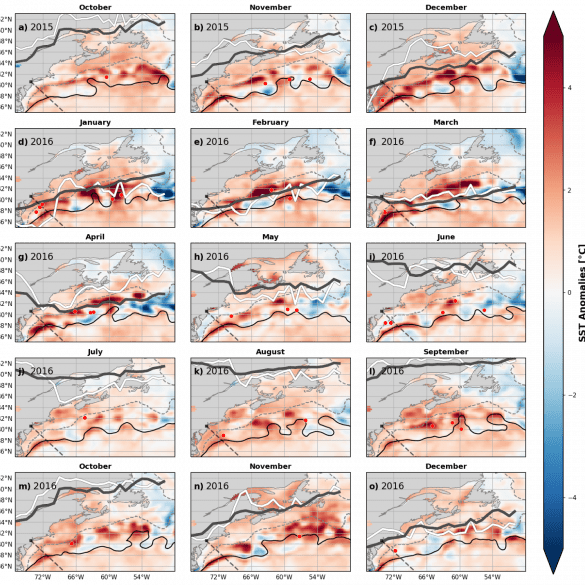Perez, E., Ryan, S., Andres, M. et al, 2021. Understanding physical drivers of the 2015/16 marine heatwaves in the Northwest Atlantic. Scientific Reports 11, 17623. https://doi.org/10.1038/s41598-021-97012-0
The authors of this study looked into major marine heatwave events that happened in the Northwest Atlantic during 2015-16. We analyze spatiotemporal patterns of surface and subsurface temperature structures across the Northwest Atlantic continental shelf and slope to assess the influences of atmospheric and oceanic processes on ocean temperatures. A combination of the Gulf Stream and jet stream were found to initiate and maintain the 2015-16 marine heatwaves. Marine heatwaves in the Northwest Atlantic can have significant socio-economic impacts and affect commercially important species such as squid and lobster. SST anomalies from October 2015 to December 2016 for the Northwest Atlantic are shown in the figure. The black solid curve indicates the average Gulf Stream path (based on 25 cm SSH isoline) for each month. Positions of WCRs on their date of absorption for the period are indicated with red dots. Gray dashed line is the isobath contour at 500-m. The thick gray line is the climatological position of the jet stream (1986–2016). The thick white line is the jet stream’s latitudinal position for 2015/16. Figure from Perez et al. (2021)

